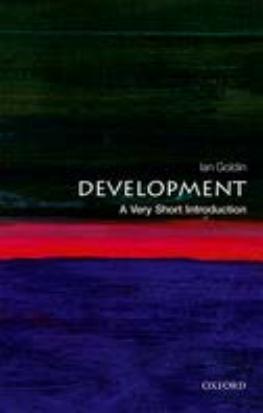Development by Ian Goldin

Author:Ian Goldin [Goldin, Ian]
Language: eng
Format: epub, pdf
ISBN: 9780191055843
Publisher: OxfordUP
Published: 2018-01-10T00:00:00+00:00
Building resilience
Stopping global catastrophes requires much higher levels of investment in global public goods. It is easy to show how the risks in any one country can spill over national borders and have dramatic consequences elsewhere. A pandemic starting in any poor country, or a fundamentalist movement gaining ground in a failed state, poses a potential threat to even the richest and most advanced countries. Investing in international health, peace, and development is therefore in all of our interests.
Risks do not only arise in poor countries, but poor people and poor countries are most vulnerable to risk. This is both because they do not have the savings, insurance, and other means to protect themselves from risks (for example by investing in flood defences, irrigation, or robust infrastructure), and because the poorest tend to be concentrated in the most risky placesâsuch as slums without sanitation, fragile agricultural lands which are vulnerable to flooding, and valley floors and floodplains which are prone to flooding.
Climate change poses a major challenge to all countries. It exacerbates poverty and has potentially devastating consequences for communities vulnerable to the rise of ocean levels or a climate shock to agricultural systems. Scientists are in no doubt that the problem has arisen due to cumulative greenhouse gas emissions, and particularly the atmospheric absorption of carbon dioxide, from the increased burning of fossil fuels over the past 200 years since industrialization began.
While the progress of currently rich countries has been inextricably linked to their use of fossil fuels, the slowing of climate change requires that the future flow of emissions be severely curtailed. As developing countries now account for almost two-thirds of emissions, the question of how they can climb the energy ladder and provide much-needed energy to meet their electricity, transport, and other energy demands without compounding the impact of climate change is an extraordinarily difficult development challenge. The resolution of this challenge cannot fall on the shoulders of the developing countries alone and for economic, political, and ethical reasons requires that the rich countries shoulder a significant part of the burden. As the slowing of climate change becomes an essential international public good, the rapid transfer of game-changing flows of financeâcurrently estimated at between $70 and $100 billion per year and rising to between $280 and $500 billion per year by 2050âis required. This needs to be accompanied by the facilitation of technological transfers and provision of expertise to help developing countries increase their energy consumption, while slowingâand in the not-too-distant future stoppingâtheir carbon and other greenhouse gas emissions.
The scale of these required transfers points to the transformation of the nature, purpose, and destination of aid flows, but not to their decline.
Download
This site does not store any files on its server. We only index and link to content provided by other sites. Please contact the content providers to delete copyright contents if any and email us, we'll remove relevant links or contents immediately.
International Integration of the Brazilian Economy by Elias C. Grivoyannis(97238)
The Radium Girls by Kate Moore(11962)
Turbulence by E. J. Noyes(7970)
Nudge - Improving Decisions about Health, Wealth, and Happiness by Thaler Sunstein(7648)
The Black Swan by Nassim Nicholas Taleb(7046)
Rich Dad Poor Dad by Robert T. Kiyosaki(6492)
Pioneering Portfolio Management by David F. Swensen(6250)
Man-made Catastrophes and Risk Information Concealment by Dmitry Chernov & Didier Sornette(5946)
Zero to One by Peter Thiel(5720)
Secrecy World by Jake Bernstein(4692)
Millionaire: The Philanderer, Gambler, and Duelist Who Invented Modern Finance by Janet Gleeson(4409)
The Age of Surveillance Capitalism by Shoshana Zuboff(4235)
Skin in the Game by Nassim Nicholas Taleb(4197)
Bullshit Jobs by David Graeber(4129)
The Money Culture by Michael Lewis(4117)
Skin in the Game: Hidden Asymmetries in Daily Life by Nassim Nicholas Taleb(3956)
The Dhandho Investor by Mohnish Pabrai(3719)
The Wisdom of Finance by Mihir Desai(3686)
Blockchain Basics by Daniel Drescher(3527)
